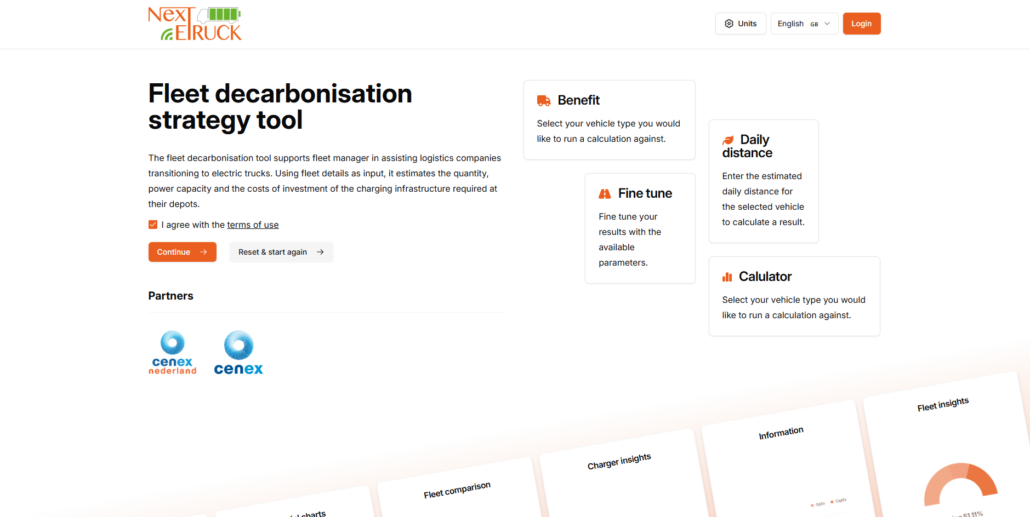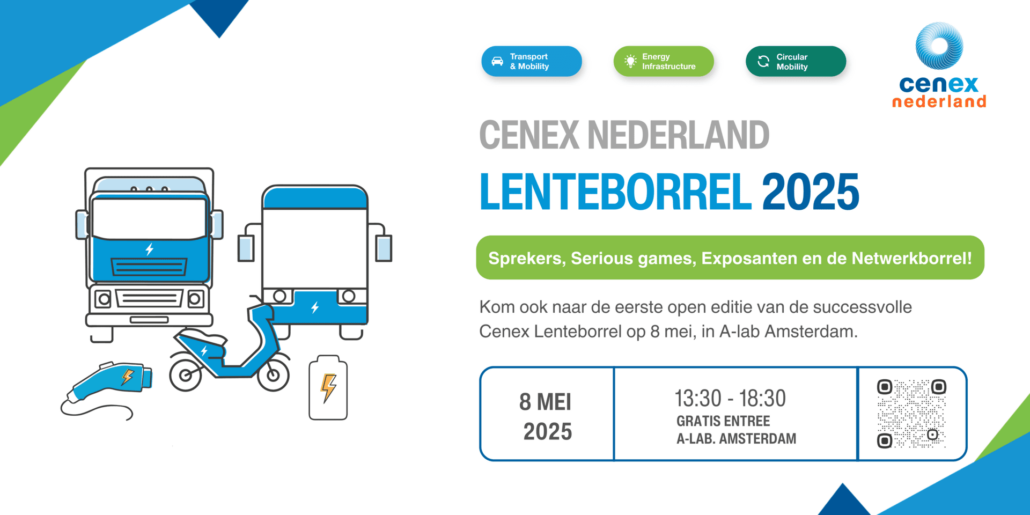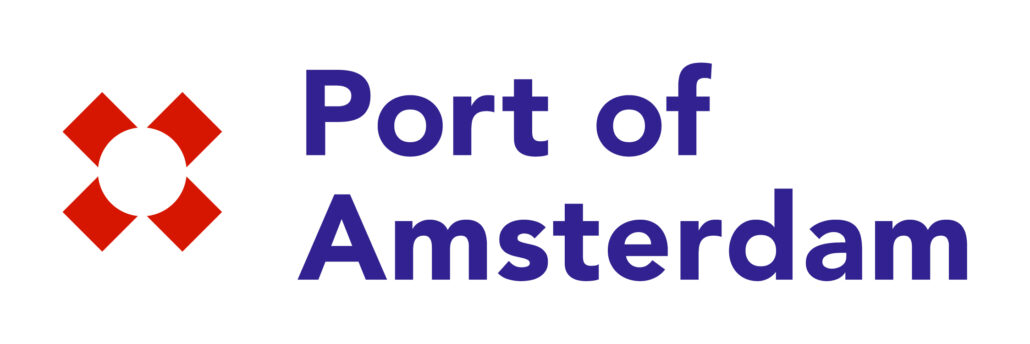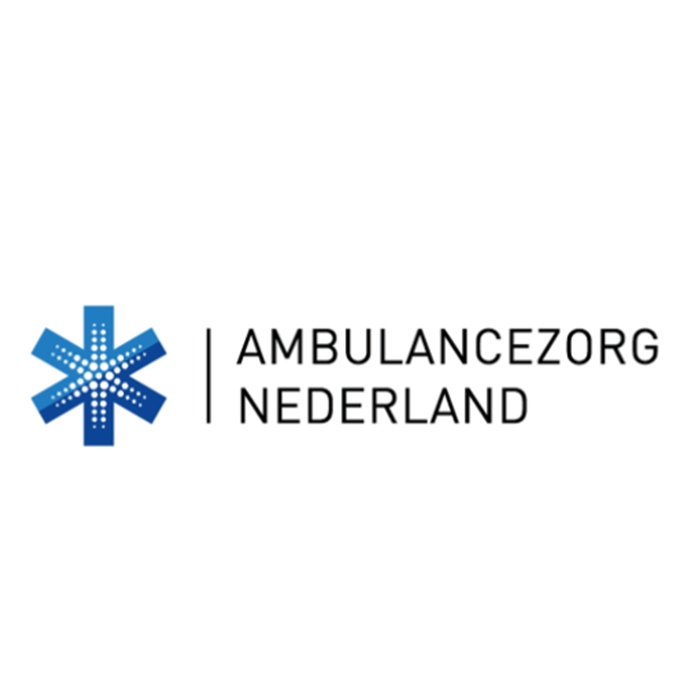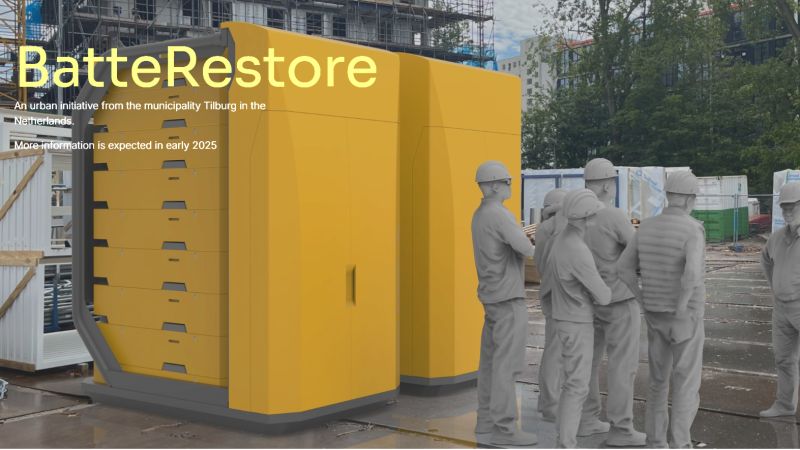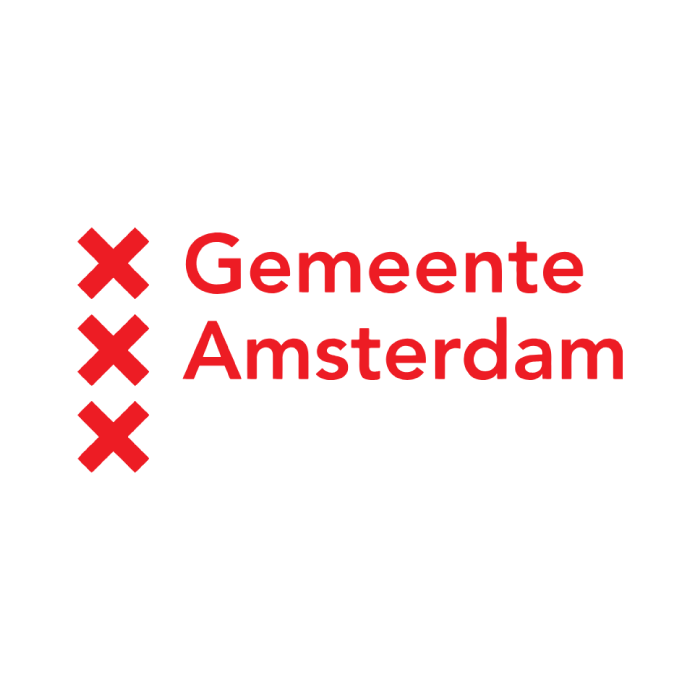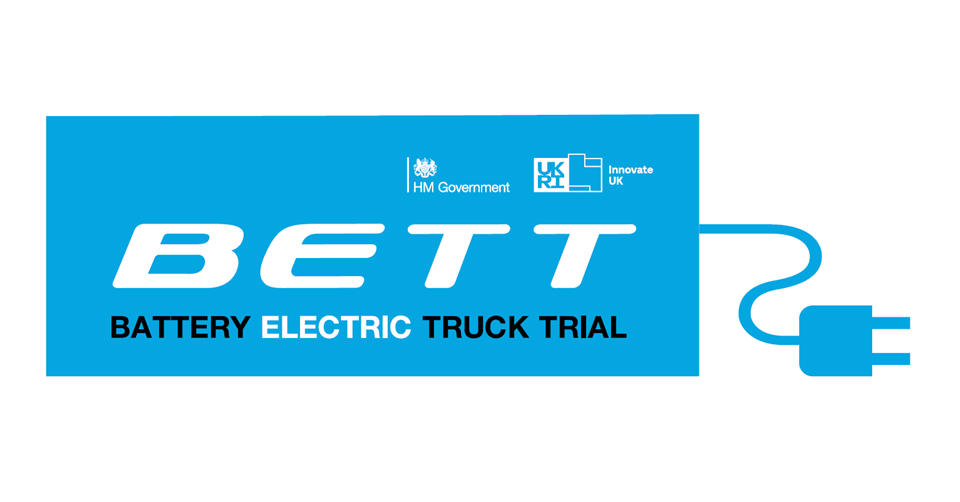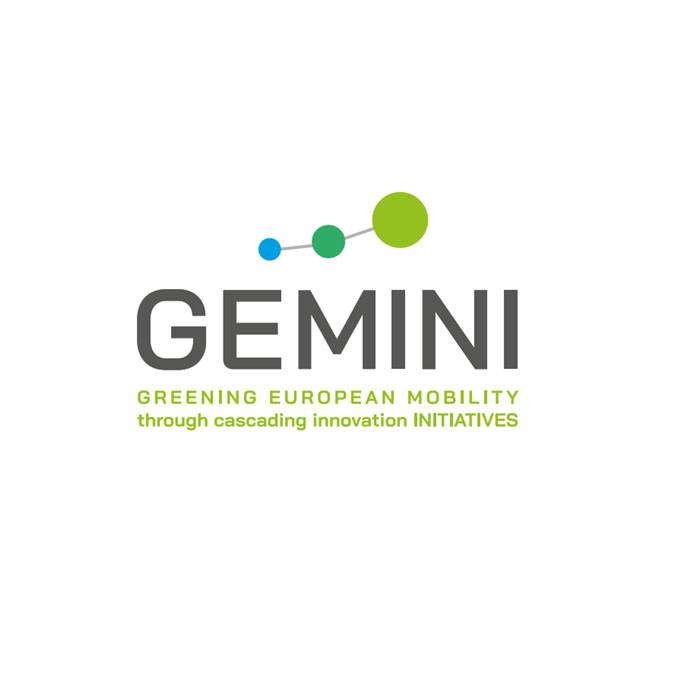KITE Tool Launched: Revolutionary Free Tool for Truck Electrification in Europe
Cenex Nederland officially launched the KITE tool last week, a free and publicly accessible online tool designed to accelerate the electrification of European freight transport. The tool was first presented during the annual Cenex Nederland Spring Drinks event, where visitors responded enthusiastically to live demonstrations.
Cenex NL’s 4th Annual Lenteborrel Expands with New Interactive Features
Cenex NL recently hosted its 4th Annual Lenteborrel (Spring Drinks), marking a significant evolution in the event’s format. For the first time, it was opened to a broader audience and featured two additions: Serious Games and a dedicated Exhibitor Area. Interactive Learning Through Serious Games Professionals from across the mobility and energy sectors participated in two strategic simulation games. Cyclum Vitae Our circularity focussed game challenged participants to evaluate the environmental impact of products throughout their lifecycle, from raw material extraction to end-of-life disposal. Through this gameplay, participants gained deeper insights into the complex trade-offs involved in creating truly sustainable product cycles which sparked interesting discussions. LogiCity LogiCity is designed as a serious game inspired by the intersection of Zero Emission city logistics and interactive gameplay. The methodology is centred on simulating real-world decision-making processes and trade-offs in logistics and sustainability. Participants engaged with scenarios that required balancing economic, environmental, and societal factors while navigating the challenges of urban logistics. Innovation Showcase in the Exhibitor Area The new Exhibitor Area featured seven organizations demonstrating cutting-edge solutions. GoCimo presented a visual mock-up of their battery swapping station for electric mopeds, designed to offer fast and scalable urban EV solutions. Coding the Curbs provided live demonstrations of their Smart Zones platform, which digitizes and optimizes urban curb space for logistics and deliveries. EV Experience shared insights from their electric mobility event focused on driver education and accelerating EV adoption. Swell displayed an operational unit of their wireless charger for mopeds, showcasing practical wireless charging technology. Vereniging DOET, the Dutch electric transport association, shared valuable industry knowledge and highlighted emerging trends and collaboration opportunities. Kempower showcased their innovations in the EV-charging sector, with emphasis on fast and scalable solutions for diverse applications. Watthub presented their experience in developing fast-charging locations for trucks and construction equipment powered by local renewable energy sources, demonstrating integration between heavy vehicle charging and sustainable power generation. Industry Leaders Share Expertise The event featured presentations from prominent speakers across the sustainable mobility sector. Roderick Spanjers from Kempower discussed innovations in Megawatt Charging Systems (MCS) enabling ultra-fast charging for heavy-duty electric vehicles, addressing one of the most significant challenges in electrifying commercial transport. Fenja Günther of Coding the Curbs explored how smart curb management can enhance urban efficiency and sustainability, offering practical solutions for increasingly congested urban environments. Pieter Looijestijn from the Ministry of Infrastructure & Water Management addressed the importance of standardizing EV charging benchmarking for reliable infrastructure rollouts, highlighting the government’s commitment to creating consistent frameworks for evaluation. Esther van Bergen of Cenex NL concluded the program with insights into Cenex NL’s role in supporting the Netherlands’ transition to zero-emission mobility and energy systems, outlining current projects and future initiatives. The event concluded with networking opportunities at A-lab, catered by The Coffee Virus, allowing participants to continue discussions in an informal setting. Following this successful expansion of the Lenteborrel format, the 5th edition in 2026 will build upon the interactive and collaborative approach that made this year’s event so valuable.
Port of Amsterdam: Sharing Shore Power
Sharing Shore Power: Port of Amsterdam Starting in 2030, the European Alternative Fuel Infrastructure Regulation (AFIR) will require European ports to provide shore power to AFIR-class vessels, including cruise ships. To meet this obligation, a 30 MVA power cable is being installed from the Papaverweg substation to the Passenger Terminal Amsterdam (PTA). At the quay, an Energy Hub with a contracted capacity of 20 MW will be established. This non-redundant connection is scheduled to be operational in Q1 2025. The estimated shore power demand for an ocean cruise ship ranges from 8 to 12 MW, while river cruise ships require approximately 5 to 6 MW, supported by 16 powerlock connections (400V, 400A), with each ship using two. Because the Energy Hub’s capacity exceeds the expected demand, there will be surplus power—especially when no cruise ships are docked. The hub will feature seven outgoing feeders, which can be configured for alternative uses beyond supplying shore power. The owner of the PTA, the Port of Amsterdam (PoA), was eager to the discover different options to share the excess power. Project Details Project Partners 2 Location(s) Amsterdam Starting Year 2023 In February 2023 Cenex Nederland, in cooperation with ROCC, carried out a quick scan to assess the feasibility of establishing a Closed Distribution System (GDS) and analysed the potential for installing charging infrastructure for parking garages and fast chargers for taxis and coaches. The study revealed that it is possible to supply charging infrastructure with energy from outside the PTA’s property boundary . Goals This led to a follow-up deep dive into the preconditions of the GDS, market opportunities, exploitation variants and potential business cases. The irregularity of the power available to share limits the number of potential value propositions. The research explores potential value propositions across the following four focus areas: Charging demand for waterborne transport Charging demand for battery storage Charging demand for road transport Facilitating a (fast) charging hub in public space The most promising value proposition is then further analysed by performing a business case analysis. This includes evaluating potential revenues, investment costs, operational feasibility, and scalability to determine its long-term viability and impact. Results The decision to establish a GDS is a logical one: not all locations around the PTA are situated on the same cadastral (WOZ) parcel. By implementing a GDS, the PoA is permitted to extend its cables to a nearby WOZ parcel surrounding the PTA. Charging demand for road transport emerged as the strongest value proposition. Installing charging infrastructure for various types of vehicles presents a highly attractive value proposition, especially when multiple vehicle categories can share the same charging facilities. Moreover, the deployment of fast-charging infrastructure has the potential to actively stimulate demand. Operating the charging infrastructure under an ownership model—where the PoA both owns and manages the system—offers the strongest business case. It also provides stability during the initial phase, when agreements with the first market participants must be established, making it advantageous for the PoA to take the lead and retain control. Preview Only
AZN: Charging Infrastructure Analysis
Charging Infrastructure Needs for a Battery Electric Ambulance Fleet Cenex Nederland, commissioned by AmbulanceZorg Nederland (AZN), has conducted a study on the charging infrastructure required in a future scenario where all ambulances in the Netherlands are battery-electric. To support this, Cenex developed a simulation model that uses historical travel data from the ambulance fleet to provide insights into vehicle operations, energy consumption, and charging needs during charging events. The primary objective was to map out the charging demand when ambulance stations and hospitals are used as charging locations. Project Details Location(s) The Netherlands Starting Year 2024 Research Methodology This study was conducted using a historical telemetry dataset spanning 14 months from 2023 to 2024, covering 1,015 ambulances in the Netherlands (limited to vehicles suitable for patient transport). The anonymised dataset, provided at the postcode level (PC4), contained approximately 7 million individual trips. The analysis included 86 hospitals and 269 ambulance stations as potential charging locations. To support the study, Cenex developed a simulation model to analyse the historical data and gain insight into vehicle operations, energy consumption, and charging requirements in a fully battery-electric ambulance fleet scenario. The simulation model evaluates various scenarios in which ambulances charge at hospitals, ambulance stations, or a combination of both. In addition to historical data, the model considers the impact of battery capacity, charging speed, and required plug-in durations on overall charging demand. A journey pattern analyses showed AZN the daily distances and energy consumption of their fleet as well as the main locations where their vehicles have opportunities to charge. Analysing the time spend at those locations gives an indication of available charge time, which in turn is input for the charging infrastructure analysis. The results give an indication of the necessary charging infrastructure to complete current trips, and identify the scenarios in which this infrastructure would be insufficient. Preview Only
New four-year project awarded: EUI BatteREstore
We are proud to announce that the BatteREstore project has received a substantial grant from the European Urban Initiative (EUI). This prestigious award emphasizes the high quality and innovative character of the application. From 1 October, the Municipality of Tilburg, Tilburg University, Cenex NL, NRG group, Greeny Energy, Emission-0, ContourdeTwern, Energiebox and Energiewending will start implementation. The project has a budget of just under 6 million euros, of which 4.8 million is a subsidy. With the batteREstore project, we will extend the lifespan of used EV batteries by first using them on construction sites (2nd life) and then for energy storage in affordable housing projects (3rd life). Ultimately, raw materials are recovered. In this way, the batteries remain available from the construction phase to occupancy without recurring (expensive) dismantling and construction of battery systems. In addition, we focus on making energy accessible to everyone: we work closely with residents in vulnerable neighbourhoods to structurally tackle energy poverty. With batteREstore, we are taking an important step in creating an affordable, scalable and sustainable energy system, which at the same time limits the environmental impact of increasing EV battery waste. We look forward to working with our partners to deliver lasting positive change for Europe. See post on Discover the 20 selected projects of the third EUI – Innovative Actions Call | EUI
Optimisation of Fleet Transition: Municipality of Amsterdam
Optimisation of Fleet Transition: Municipality of Amsterdam The City of Amsterdam has made it a priority to make its fleet emission-free by 2030, as part of its sustainability ambitions. A transition plan was drawn up in 2019 to achieve this objective. However, in order to meet changing sustainability objectives, market trends and operational requirements, it was decided to recalibrate this plan. Project Details Project Partners 2 Location(s) Amsterdam Starting Year 2024 Download Report The municipality of Amsterdam has jointly asked FIER Automotive and Cenex Nederland to carry out the recalibration and to formulate advice for the continuation of the transition. The aim was to make an integrated assessment of the municipal sustainability goals, market developments and the operational needs of the various organisational units. This required an in-depth analysis of the existing fleet, identifying bottlenecks and opportunities, and formulating recommendations for an optimized transition plan. Goals – Recalibration of the fleet transition plan to meet the sustainability goals of the municipality of Amsterdam. – Identify opportunities for improved operational efficiency and cost control. – Formulating recommendations for an integrated transition plan that takes into account the possibilities regarding charging infrastructure, (future) market developments and technological trends. Results – An updated transition plan that provides integral insight into the opportunities and challenges of making the Municipality of Amsterdam’s fleet more sustainable. -A final report with detailed insights and advice, including official coordination with the stakeholders involved. – Recommendations for an optimized transition plan, with a focus on sustainability, operational efficiency and cost control. Preview Only
BETT: Battery Electric Truck Trial
BETT: Battery Electric Truck Trial In 2021, Innovate UK allocated funding to showcase the potential of battery electric trucks in real-world scenarios. DAF, a distinguished truck manufacturer, spearheaded a project to deploy a fleet of twenty 19-tonne rigid electric trucks across nine public sector fleets spanning various regions of England. The primary aim was to conduct an impartial evaluation of these vehicles’ performance, generating unbiased data to enlighten the industry about the advantages and limitations of integrating electric heavy goods vehicles (HGVs). This endeavour represents a notable advancement in the transport sector, signalling a shift toward a more sustainable trajectory. With this evidence base, the industry can make informed decisions and progress toward more environmentally friendly practices. It signifies a modest stride toward a more promising and sustainable future for forthcoming generations. Project Details Location(s) United Kingdom Starting Year 2022 Cenex stepped up to this challenge when they were appointed by DAF as the independent trial monitoring and study partner. A project website was set up to disseminate live data and findings from the trial, as well as to showcase a fleet planning tool for stakeholders thinking of transitioning their HGV fleet to electric. Cenex NL supported our colleagues at Cenex with the life cycle assessment of the Battery Electric Truck Trial to understand the environmental impact over the entire life of a truck from production of raw materials through to construction, regular use and end-of-life. The assessment covered both an electric truck and its diesel equivalent to enable comparison of the difference. The Result The results offer crucial insights into the environmental impact of transitioning to electric heavy goods vehicles, focusing on emissions during production, different usage scenarios, and end-of-life scenarios. During the production phase, the electric variant emits 1.6 times more emissions compared to the diesel truck, primarily attributed to the battery manufacturing process. Emissions during the usage phase vary significantly depending on the electricity source. The standard UK grid mix results in less than half the emissions of a diesel truck, while Danish electricity can achieve nearly an 90% reduction. Conversely, a grid reliant on coal may experience a 13% increase in emissions compared to diesel. Despite the higher production emissions, the extensive distances typically covered by HGVs result in significant savings during the usage phase. With the standard UK grid mix, environmental payback can be achieved in just over a year. In summary, the analysis of emissions from electric HGVs underscores the complexities and opportunities in transitioning to sustainable transportation solutions. Despite challenges in production emissions and variability in usage emissions, the study reveals a pathway towards environmental payback. These insights inform strategic decisions aimed at fostering a greener future in the heavy transportation sector. Visit website Preview Only
GEMINI: Greening European Mobility through cascading innovation INItiatives
GEMINI: Greening European Mobility through cascading innovation INItiatives At the heart of the GEMINI Project lies a commitment to fostering innovation and to accelerate the transition towards climate neutrality in mobility solutions. Goal 11 of the UN Sustainable Development Goals advocates for access to safe, affordable, and sustainable transport systems. Nowadays, transport plays a significant role on air pollution and is one of the major sources of greenhouse gas emissions and is the only sector in the EU with increased Green House Gas (GHG) emissions compared to 1990. The promotion of sustainable and innovative mobility solutions can help towards reducing GHG and carbon footprints, improving air quality, and achieving climate goals. Project Details Project Partners 43 Location(s) Finland, Denmark, Netherlands, Germany, Belgium, France, Italy, Portugal Starting Year 2023 Duration 4 Years The GEMINI Project (2023-2026 “Greening European Mobility through cascading innovation Initiatives” is a Horizon Europe funded project with 43 partners led by the Urban Electric Mobility Initiative (UEMI). To accelerate the transition towards climate neutrality, GEMINI aims to foster widespread adoption of sustainable shared mobility solutions. To achieve this, the project will develop and test innovative business models for New Mobility Services (NMS) such as shared connected automated vehicles and shared mobility public transport through public-private partnerships. The NMS business models will be demonstrated in ten European Cities (Amsterdam, Copenhagen, Helsinki, Munich, Leuven, Ljubljana, Paris-Saclay, Porto and Turin). Additionally, GEMINI will create digital tools and platforms that accommodate various mobility services, promoting collaboration and integration within the mobility sector. The project will actively engage stakeholders in the co-creation process, introducing Mobility as a Commons (MaaC) and incentivizing behavioural shifts and user acceptance of these new mobility options. Furthermore, GEMINI will formulate policy recommendations to enable the scaling up and replication of successful mobility solutions. By aligning with Sustainable Urban Mobility Plans (SUMPs) and urban mobility planning frameworks, the project aims to contribute to a comprehensive policy package that guides and incentivizes future mobility innovations. The GEMINI project envisions fostering sustainable, accessible, and affordable shared mobility solutions that contribute to a safer and more environmentally friendly urban mobility landscape. Objectives Develop and test sustainable business models for New Mobility Services (NMS) to increase shared mobility solutions (MaaS and MaaC) for various user groups, including enterprises, families, and tourists. Create digital enablers, including collaboration platforms and multimodal MaaS solutions, to integrate and facilitate a wide range of mobility services. Actively involve stakeholders in the co-creation of new mobility options and integrate Social Innovation practices to incentivize behavioural changes and user acceptance. Formulate policy recommendations to support the scaling up and replicability of successful mobility solutions, contributing to the development and implementation of SUMPs and urban mobility planning frameworks. Cenex NL key contributions The team plays a vital role in developing policy recommendations and technology roadmaps to accelerate the deployment of innovative mobility services. Through collaboration with local authorities in twinning cities, these roadmaps will align with the fast-track deployment of shared mobility trends in the short and medium term. Additionally, Cenex NL will contribute to the development of the Handbook consolidating the project’s learnings and offering practical guidance to cities and citizens across Europe. This project has received funding from the European Union’s Horizon Europe research and innovation programme under grant agreement No 101103801. Visit website Preview Only Project Partners

